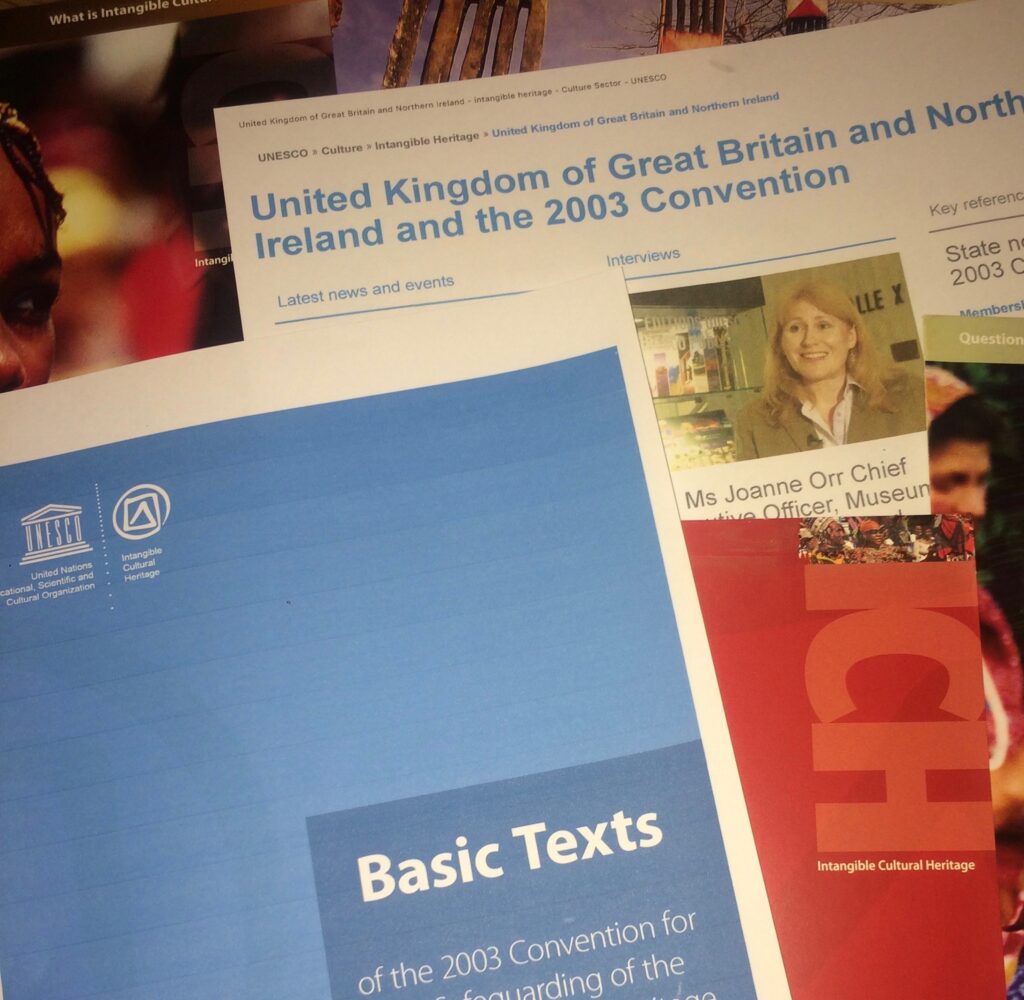Intangible Cultural Heritage in the UK – promoting and safeguarding our diverse living cultures

An ICOMOS-UK Conference, London 20th September 2014
Contemporary re-telling and performance of Chaucer’s Canterbury Tales, traditional craft skills, such as knife making and woodturning, diaspora community festivals, archives of everyday life, ancient woodlands as places of commercial activity and spiritual power – all these and more featured in the first ever conference on intangible cultural heritage (ICH) in the UK, held in the Museum of London in the Docklands on 20th September. More than 70 delegates, from storytellers to craftspeople, dancers to musicians, and academics to archivists and museum professionals, came together for a day of discussion and debate highlighting the range and diversity of ICH and its practitioners in the UK. Yet the ICH label itself is something with which practitioners are often not familiar, and indeed during the course of the day a number of speakers noted a tendency to ignore a cultural component to what are often regarded as functional activities, such as handicraft production or commercial coppicing. So is there really a need for ‘ICH’ as an umbrella for all these different activities? I suggest two main reasons for embracing ICH as a category:
Firstly, despite the diverse range covered by ICH as a term, it became clear during the course of the day that practitioners face many common issues. In particular, the problem of transmission – how to ensure the survival of knowledge, practices and skills down the generations – is widely experienced, whether it concerns basket making, local dance or oral traditions. These challenges are the product of social changes, such as increased mobility, competition from globalised production, or changing leisure patterns. And even where demand remains high – for many handcrafted items, for example, where craftsmen and women, usually working alone, struggle to keep up with the demand for their products – institutional changes in education and apprenticeship can create obstacles to the transmission of traditional skills. Recognition of a common set of problems may be the starting point for identifying solutions – and the creation of a broadly based ICH network can go some way towards combating the fragmentation and isolation in which many practitioners operate.
Secondly, acknowledging the cultural component of these activities means recognising their strong place associations and close relationships with landscapes and communities in both town and countryside. This in turn opens up all kinds of further possibilities for linking ICH safeguarding practice with sustainable development, community participation and social inclusion agendas, and the experience economy. The Heritage Lottery Fund recognises this potential in its support for community-related ICH projects, as Carole Souter, HLF’s Chief Executive, outlined in the closing sessions of the conference. Whilst community heritage is currently largely understood in terms of oral histories, recognition of ICH as a category with a diverse range of contemporary expressions can be the first step in creating a broader platform for developing more collaborative, mutually sustaining relationships.
Whilst UK ratification of the UNESCO ICH Convention may be some way off yet, the ICOMOS conference showed that ICH has a strong presence in Britain today, a broad base of interest and support, and taps into a number of urgent contemporary issues and currents – from the rediscovery of a culture of ‘making’, to local production and sense of place, the restructuring of employment and the economy, the relationship with technology … watch this space!
